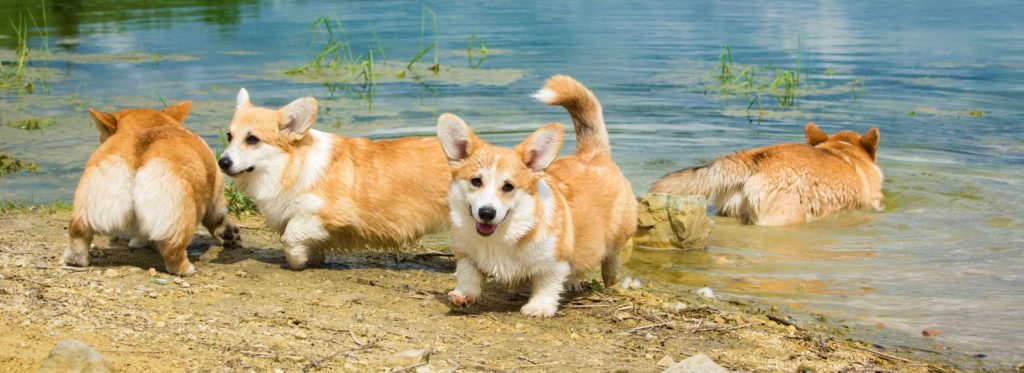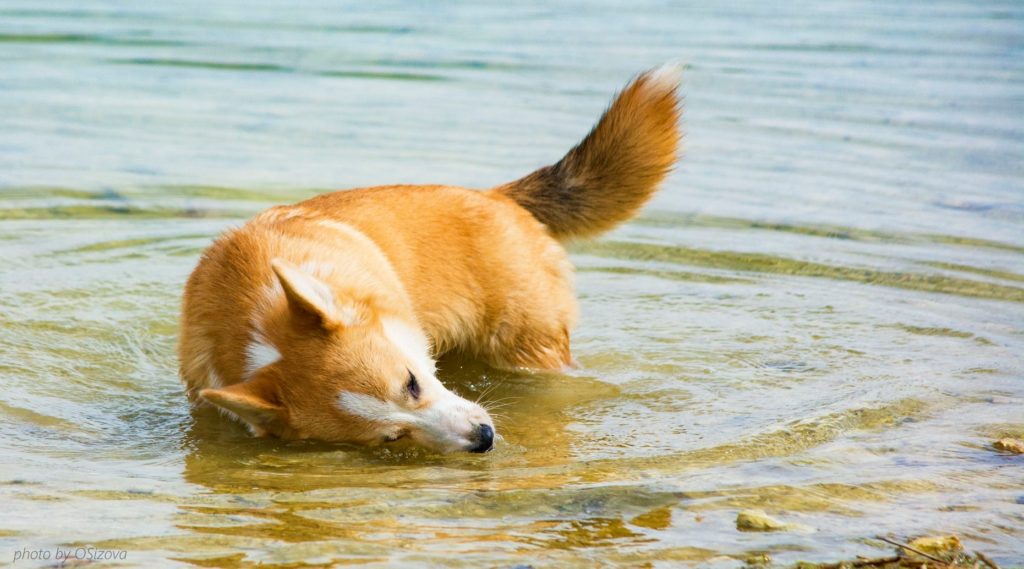Another interesting article from the Provet clinic, this time about dealing with a dog in hot weather. The text applies to all breeds, but because welsh corgi pembroke travel everywhere with their owners, it is dedicated to this breed in particular.
Summer is in full swing, the sun is hot. We wait for it all year round, but dogs often avoid sunny places. Unlike humans, they don’t have such advanced adaptation mechanisms to high temperatures. They mainly get rid of excess heat through panting. However, at the height of summer, this mechanism may prove ineffective, and the result may be tragic.

DO YOU KNOW HOW TO PROTECT YOUR DOG AGAINST THE HEAT?
There are many factors that affect the body’s ability to effectively transfer heat and a dog’s susceptibility to heat:
1. dehydration
2. young age (especially under 6 months of age)
3. overweight
4. old age
5. sick animal (especially during treatment, in the perioperative period, with cardiovascular diseases)
6. short-skulled dogs
Regardless of whether your pet belongs to any of the above groups, you should know the rules of properly protecting your dog against overheating.

HOW TO PROTECT YOUR DOG FROM THE HEAT?
1. Never leave your dog in the car – the car cabin heats up to very high temperatures in a short time when it is hot. Regardless of the tilted window, the air supply or the water bowl, the interior of the car can turn out to be a death trap. Avoid taking your dog for a ride in the car, especially if the situation requires you to leave it in the car. Remember that according to the current regulations, in order to protect the animal’s life and health, a person who comes across a dog locked in a car may break the glass and get the animal out of the inside with impunity.
2. Access to water – both at home and on a walk, always provide your dog with fresh, clean water. Outside, it’s best to have a bottle and bowl handy. At home, we make sure that the water is changed several times a day.
3. Avoid walking in hot weather – the length and intensity of the walk should be adjusted to the prevailing temperature. In summer, longer walks are only recommended in the early morning or evening hours. When the sun is full, it should be brought out briefly, only for the needs of the animal.
4. Avoid concrete and asphalt – first place your hand on the surface, then take your pet out there. In summer, artificial surfaces heat up to very high temperatures, which may cause burns to the dog’s pads. It is definitely a better idea to avoid such places and walk on the lawn or in the forest.
5. Keep your dog cool – providing shade, soaking the fur with water, digging a hole in the garden. Avoid applying wet fabrics to the animal’s body.
6. Avoid muzzles – especially those that keep the dog from panting.
7. Take care of the coat – Proper brushing of the coat can help keep your dog at the correct body temperature. Remember to visit the dog’s hairdresser!